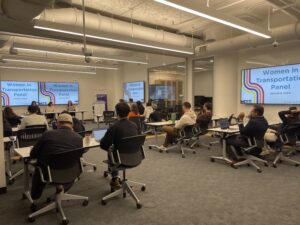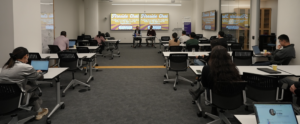LinkedIn LinkedIn LinkedIn Meet 2023-24’s Women in Transportation The Women...
Read More“I’ve worked a lot on network modeling, especially under a multimodal setting, considering more sustainable and equitable modes,” she says. She’s worked on a project that looks into quantifying network connectivity in terms of biking as a means of accessing public transit, considering network structure, transit availability, bike infrastructure, and so on. She helped developed a publicly-available electric vehicle charging infrastructure evaluation tool that considers M/D/C queues at charging stations, and tested it on NYC city-owned electric fleet.
With Mobility-on-Demand (MOD) emerging as an important part of multimodal transportation systems, Liu has been part of a stochastic user equilibrium model which considers a concept named congestible capacities, which refers to a network characteristic of MOD that the link capacities keeps changing with the flows. And she’s worked on a day-to-day adjustment model for microtransit simulation collaborating with VIA.
After working on different modes separately, Liu seeks to model the market consists of multiple users, operators, and modes, which leads to her current focus
What's your favorite way to get around the city?
I always find myself traveling around the city in a multimodal way. I may cycle to somewhere and then take the subway, or rideshare and walk. That's one of the reasons why I'm looking into Mobiltiy-as-a-Service in my work.Bingqing Liu





